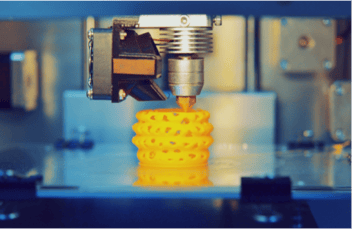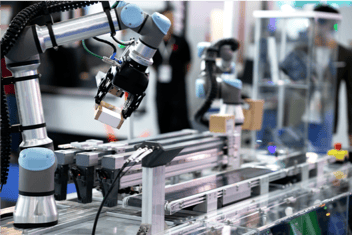What is a Minimum Viable Product and How Do I Create One?
How a minimum viable product will launch your product-based startup.
There’s plenty of conversation in the startup world around minimum viable product (MVP). How do you define minimum viable product? Don’t you need a branded product to go to market? Do you need one to get a patent?
Let’s go through the basics.
What is a Minimum Viable Product and Why is it Important?
Before investing a lot of money in an idea that consumers might not want, it’s best to get feedback. Surveys are only so helpful. It’s far better to let consumers experience an idea and, if possible, even sell it to them. That’s where MVP’s come in. They are simple representations of an idea meant to help an entrepreneur get feedback from consumers.
Brandon Cornuke, Vice President of Startup Services for MAGNET, describes it this way: “A lot of people think of MVPs as physical things – things that you need to build (probably because it says “product”). Actually, an MVP can be as simple as a description or a PowerPoint slide or a mockup. It’s anything that explains the concept you’re trying to get across without unnecessary detail and cost.”
Consider the following product. Le’Anna Miller founded BabyMunch Organics; the company makes fresh baby food and kids’ smoothies to nurture a love of healthy eating. One of Miller’s products is a 21-day weaning kit. Here’s a before and after of minimum viable product to what she produces today:
Miller tells this story about her MVP experience: “MVPs are scary for people. You have brands you love and want to emulate with pretty packaging. But I started at famers markets selling pouches of baby food and kids’ smoothies with no labels, and people still bought them. I knew that once I branded, people would love them even more. Don’t shy away from having packaging without pretty branding, because it’s really about the product.”
Why Make a Minimum Viable Product?
As much as she would have preferred starting with a well-branded product, Miller understood the need for an MVP. “You’re going to have an idea that no one understands but you…until you have a physical product to show them. Take your idea and create something physical – a minimum viable product. Then they’ll understand.”
“Get your product in the market and test it ASAP. You need something that will engage with the customer, even without the bells and whistles,” says Carla Macklin, founder of Alium Adaptive Apparel. Alium Adaptive Apparel makes better functioning clothes for seniors and their caregivers. Carla initially wanted to make her apparel from antimicrobial, moisture-wicking fabric, but when she ran into supply chain issues, she went with a non-tech fabric for her MVP. Her apparel in the market, and she’s collecting feedback that’s helping hone the product.
The biggest reason startups fail is because there’s no market need for their product. MVPs are meant to validate (or at least provide some evidence for) market need before over-investing in an idea.
Another reason to make an MVP? You can’t get a patent on something you haven’t actually made. Intellectual property attorney Luis Carrion puts it this way. “Ideas are not patentable. Inventions are patentable. Take your idea and go through the process to develop the thing. Actually invent it. That’s the substance of intellectual property.”
How Do I Create a Minimum Viable Product?
Northeast Ohio startups have some great resources available for creating a minimum viable product.
Case Western Reserve University’s Sears think[box]
Have a great manufactured product idea but no resources to actually create it? That’s where think[box] comes in. The Case Western Reserve University Sears think[box] is the largest open-access innovation center at any university in the world. It has 3D printers, laser cutters, sewing machines, a metal and wood shop and more available to the public. Sound intimidating? Don’t worry; think[box] offers training free of charge.
Cleveland Culinary Launch & Kitchen
Are you trying to enter the craft food market? The Cleveland Culinary Launch & Kitchen (CCLK) can help you every step of the way. CCLK is a shared kitchen and food business incubator in Cleveland. Along with providing a fully equipped commercial kitchen to food entrepreneurs, CCLK offers business support, mentorship and peer support and unmatched networking opportunities. Their goal is to increase the success rate of local food businesses in Northeast Ohio.
MAGNET Iterator
Some projects could use assistance from a seasoned engineer. The MAGNET Iterator team includes product development engineers in addition to the strategy staff. With a machining shop on the first floor, the Iterator’s engineers can bring your design to life. MAGNET's Iterator wants to help make your startup more focused, efficient, and resilient. (Sound like what you need? Find out more about Iterator membership.)
Use an MVP to Your Advantage
Brandon sums up the importance of a minimum viable product this way: “You have to get it out there and learn what the market thinks. What we find is that entrepreneurs are constantly trying to perfect their product, but perfection is in the eye of the consumer. Make sure you’re always exposing consumers to your product. Let them tell you what makes your product great.”





